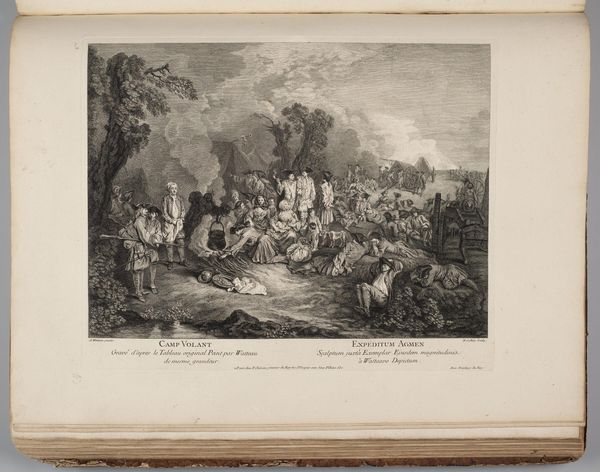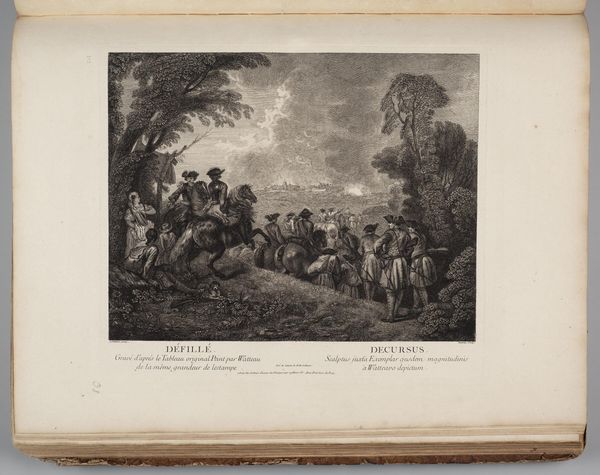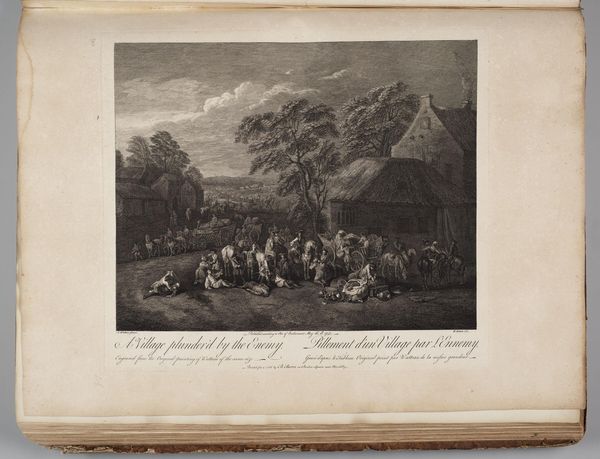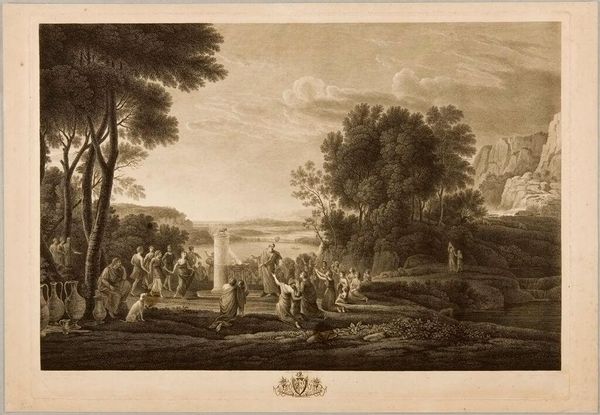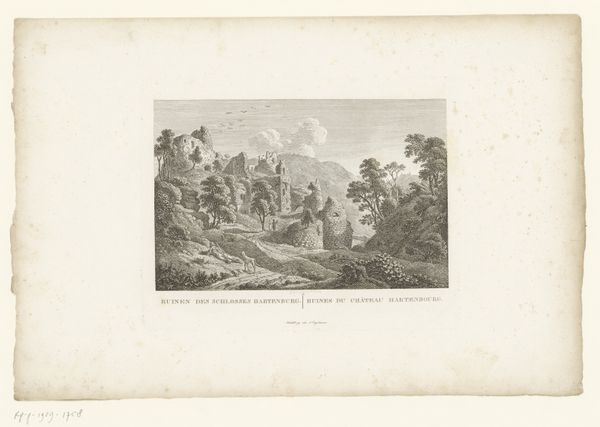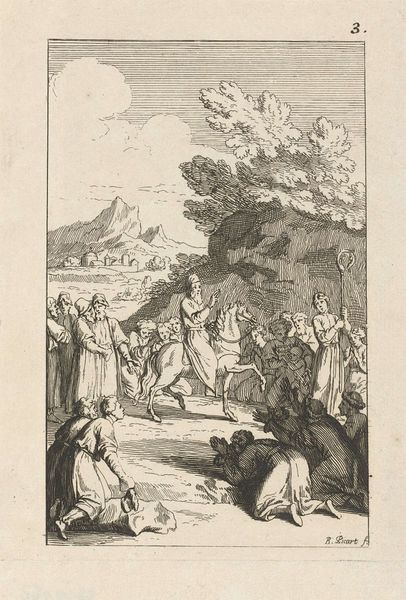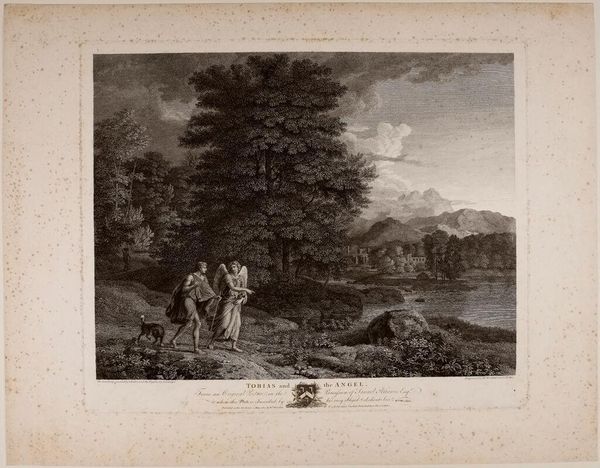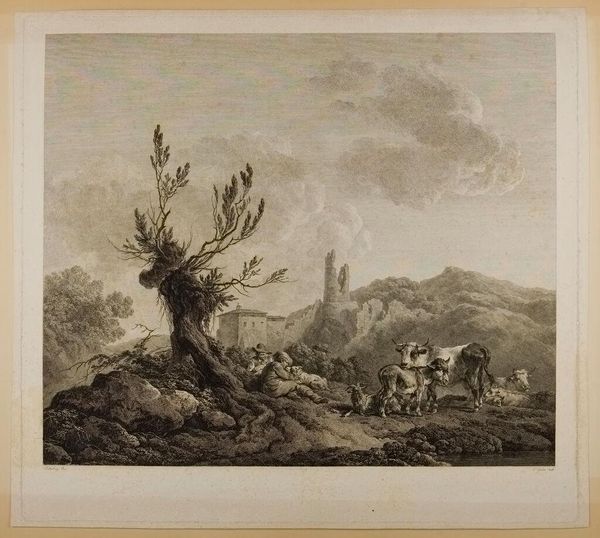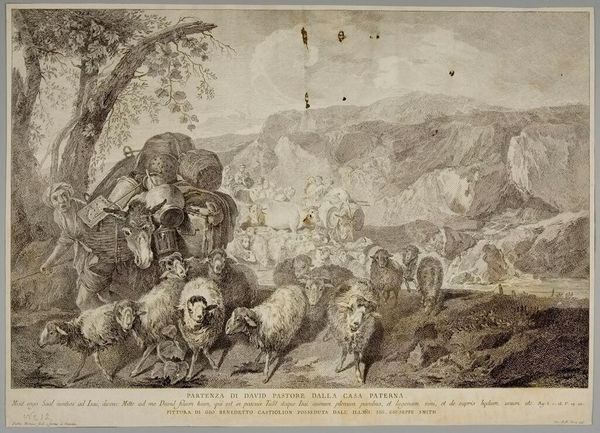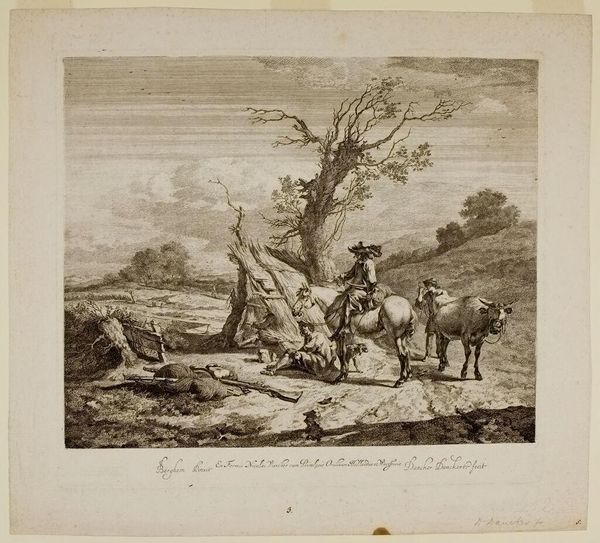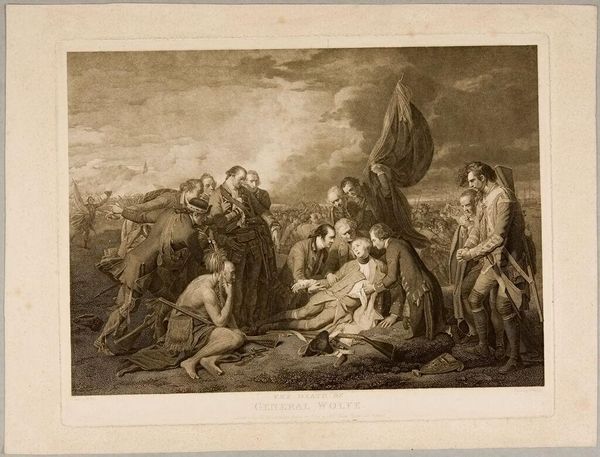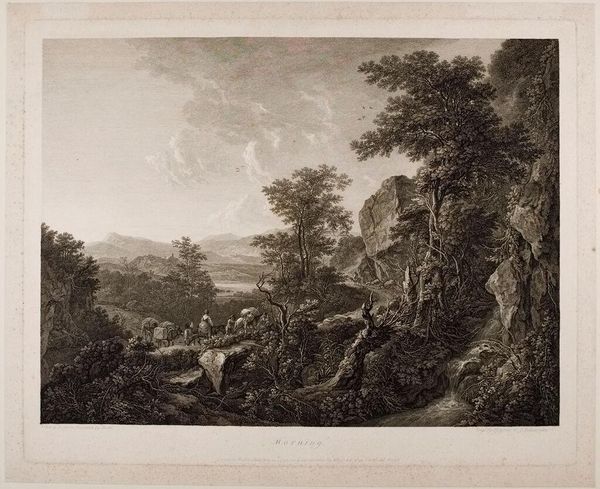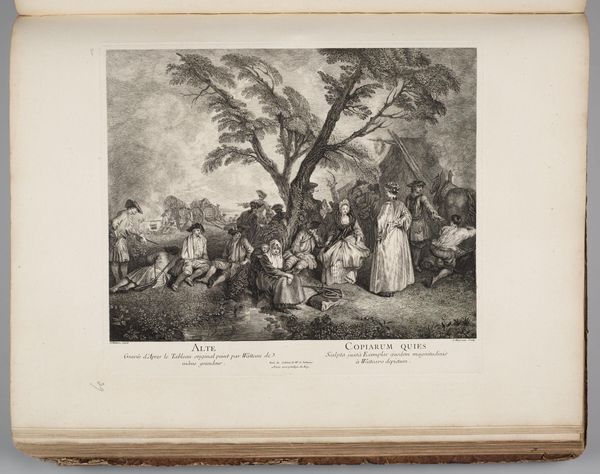
Calypso's Reception of Telemachus and Mentor after Their Shipwreck c. 18th century
0:00
0:00
Copyright: CC0 1.0
Curator: Looking at William Woollett’s print, "Calypso's Reception of Telemachus and Mentor after Their Shipwreck", I'm immediately struck by the theatrical staging of the figures against the imposing landscape. Editor: It is very dramatic! And the light seems to be catching mostly on the group to the left, Calypso and her nymphs. I wonder what material would have been used to create this print, and how it would have been distributed. Curator: Consider the mythic weight of Calypso, offering a haven. This scene distills the enduring symbol of hospitality—the emotional and psychological comfort found in refuge after hardship. Editor: Yet the means of creating such images would have been reserved to wealthy patrons, which in turn limits who might access or interpret this narrative of refuge. Curator: The artist’s hand, translated through the engraver’s skill, brings us closer to understanding eighteenth-century interpretations of Homer. Editor: Yes, but how might we reconsider access to those interpretations, given the economic and social factors in play? Curator: It seems we’ve both found compelling aspects in this artwork to consider further. Editor: Absolutely. A complex interplay between material conditions and the persistence of stories.
Comments
No comments
Be the first to comment and join the conversation on the ultimate creative platform.
